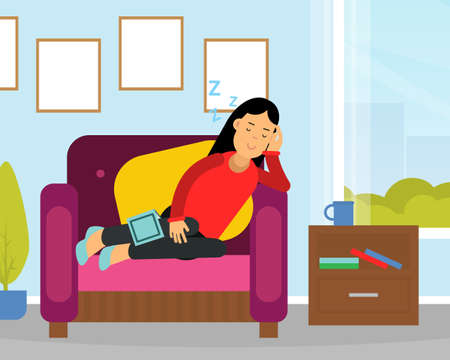Understanding Jet Lag and Its Effects on Kids
Traveling across time zones can be exciting for families, but jet lag often comes with the territory. Jet lag happens when our internal body clock, or circadian rhythm, gets out of sync with the new local time after a long flight. While adults may feel tired or groggy, kids can react a bit differently, and their symptoms may sometimes surprise parents.
What Is Jet Lag?
Jet lag is a temporary sleep disorder that occurs when you travel quickly across multiple time zones. Your body is used to a certain schedule for sleeping, eating, and being awake. When you arrive in a place with a different time zone, your body needs time to adjust.
How Jet Lag Affects Children Differently
Kids have developing bodies and brains, so changes in routine or sleep can hit them harder than adults. While some children bounce back quickly, others might need more help adjusting. Here’s how jet lag can show up differently in kids compared to adults:
| Jet Lag Effects | In Adults | In Children |
|---|---|---|
| Tiredness | Feel sleepy during the day | May act cranky or hyperactive instead of sleepy |
| Sleep Trouble | Difficulty falling asleep at night | Trouble napping or sleeping through the night; waking up very early or late |
| Mood Changes | Irritability, low energy | Tantrums, clinginess, mood swings |
| Hunger Schedule | Hungry at odd hours | Asking for snacks at unusual times or refusing meals |
Signs of Jet Lag Parents Should Watch For
- Trouble falling asleep or waking up much earlier/later than usual
- Moodiness—more tantrums or emotional outbursts than normal
- Lack of interest in playing or exploring new places
- Tummy aches or asking for food at strange times
Why Its Important to Notice These Signs Early
Catching jet lag symptoms early helps parents support their kids through the adjustment period. Understanding what’s normal can make travel smoother and less stressful for everyone.
2. Planning Ahead for a Smooth Transition
Tips on Adjusting Sleep Schedules Before the Trip
One of the best ways to help kids cope with jet lag is by gradually shifting their sleep schedules before your trip. About a week before you leave, start adjusting bedtime and wake-up times by 15–30 minutes each day toward your destination’s time zone. This gentle transition can make a big difference in how your child feels upon arrival. For example, if you’re traveling from New York to California, try having your child go to bed and wake up slightly later each day.
Sample Sleep Adjustment Schedule
| Days Before Departure | Bedtime Adjustment | Wake-Up Adjustment |
|---|---|---|
| 7–5 Days Out | +15 minutes later | +15 minutes later |
| 4–2 Days Out | +30 minutes later | +30 minutes later |
| 1 Day Out | Match destination time zone as close as possible | Match destination time zone as close as possible |
Choosing Optimal Flight Times
Selecting the right flight times can also ease your family’s transition into a new time zone. If possible, book flights that coincide with your children’s natural sleep schedules. Overnight (red-eye) flights work well for longer journeys, allowing kids to sleep during travel and arrive closer to morning at your destination. Try to avoid flights that arrive late at night or require waking kids in the middle of their regular sleeping hours.
Flight Timing Tips Table
| Situation | Recommended Flight Time | Why? |
|---|---|---|
| Long-haul (6+ hours) | Red-eye/overnight flight | Keeps kids’ sleep patterns intact; easier adjustment upon arrival |
| Short-haul (under 6 hours) | Mid-morning or early afternoon flight | Avoids disrupting naps or nighttime sleep; less fatigue on arrival |
| If arriving across time zones | Arrive in daytime (local time) | Easier to stay awake until local bedtime; helps reset internal clock faster |
Packing Essential Comfort Items for Kids
A smooth journey starts with thoughtful packing. Bring along familiar comfort items like favorite blankets, stuffed animals, pacifiers, or bedtime storybooks. These small touches can help children feel secure and settle more easily into new surroundings—whether on a plane or in a hotel room. Don’t forget noise-canceling headphones, eye masks, or travel pillows that suit your child’s age and preferences. Having these essentials handy makes it easier to stick to bedtime routines while away from home.

3. Managing Sleep and Meals During Travel
Creating a Sleep-Friendly Environment on Planes
Getting kids to rest on a plane can be tough, but setting up a cozy space makes a big difference. Bring their favorite blanket or stuffed animal, and use a neck pillow for extra comfort. Block out light with an eye mask or by pulling down the window shade. Noise-canceling headphones or earplugs can help drown out engine sounds. If your child is used to white noise at home, consider downloading a white noise app before you travel.
Tips for Better Sleep on Planes
| What to Do | Why It Helps |
|---|---|
| Bring familiar sleep items (blanket, toy) | Makes kids feel secure and relaxed |
| Use eye masks and window shades | Blocks out light for easier sleep |
| Noise-canceling headphones/earplugs | Reduces distractions from plane noise |
| White noise app/music | Mimics home sleep environment |
| Dress in comfy layers | Keeps kids at the right temperature |
Adjusting Meal Times Gradually
Eating at local meal times helps reset your child’s body clock faster. In the days leading up to your trip, try shifting your childs meals closer to the schedule of your destination. Once youre on board, offer snacks or meals according to the new time zone as much as possible. Avoid heavy meals right before bedtime—opt for something light like yogurt, fruit, or crackers.
Sample Meal Timing Adjustment Plan
| Days Before Departure | Home Mealtime (Usual) | Adjusted Mealtime (Destination) |
|---|---|---|
| 3 days out | 12:00 PM Lunch | 11:30 AM Lunch |
| 2 days out | 12:00 PM Lunch | 11:00 AM Lunch |
| 1 day out | 12:00 PM Lunch | 10:30 AM Lunch (if possible) |
| Travel Day/Arrival | – – – | Lunch at local time in destination city |
Keeping Kids Hydrated While Traveling
The dry air on planes can make everyone feel dehydrated more quickly than usual. Offer your kids water regularly throughout the flight—even if they don’t ask for it. Avoid sugary drinks and caffeine, which can interfere with sleep and hydration. Pack a reusable water bottle for each child and refill it after passing through airport security. Add slices of fruit like lemon or orange to make water more appealing.
Quick Hydration Tips:
- Packed reusable water bottles are great for refills.
- Avoid sodas and caffeinated drinks.
- Add fruit slices to water for flavor.
- Remind kids to take small sips often instead of big gulps.
By planning ahead and making these small adjustments, you’ll help your kids stay comfortable and adjust to new time zones with less fuss.
4. Helping Kids Adjust Upon Arrival
Getting Children Used to the New Time Zone
Once you’ve arrived at your destination, helping your kids adjust to the new time zone is key to a smoother trip. Children’s bodies take time to adapt, but there are some friendly and effective ways to make this transition easier for them.
Outdoor Activities and Sunlight
Spending time outdoors is one of the best ways to reset your child’s internal clock. Natural sunlight helps regulate sleep-wake cycles, making it easier for their bodies to understand when it’s time to be awake and when it’s time to rest. Plan outdoor activities, like visiting a local park or taking a family walk, especially in the morning or early afternoon.
Nap Routines
While it may be tempting to let your kids nap whenever they feel tired, try to keep naps short and scheduled so they don’t interfere with nighttime sleep. Aim for naps that are no longer than 30-45 minutes, and avoid letting children sleep too late in the afternoon.
Sample Nap Schedule After Arrival
| Age Group | Suggested Nap Time | Maximum Nap Length |
|---|---|---|
| Toddlers (1-3 yrs) | Early Afternoon (12pm-2pm) | 45 minutes |
| Preschoolers (3-5 yrs) | After Lunch (1pm-2pm) | 30 minutes |
| Younger Kids (6+ yrs) | If needed, before 2pm | 20-30 minutes |
Encourage Eating on Local Time
Meals can also help signal to your childs body what time it is. Try serving breakfast, lunch, and dinner according to the local schedule as soon as possible after you arrive. This helps their internal clock adjust faster.
Create a Relaxing Bedtime Routine
A familiar bedtime routine can provide comfort and help your child wind down even in an unfamiliar place. Bring along a favorite book or stuffed animal, and keep bedtime steps similar to those at home—like brushing teeth, reading a story, or listening to calming music.
Tips for a Smooth Transition:
- Expose your child to plenty of daylight during the day.
- Avoid screens close to bedtime as blue light can disrupt sleep.
- Stick as closely as possible to usual bedtimes in local time.
- If your child wakes up very early, encourage quiet play until it’s an appropriate wake-up time.
- Praise your child for adapting and remind them that feeling tired at first is normal.
5. Self-Care for Parents
Why Parental Self-Care Matters During Jet Lag
When traveling with kids, parents often put their children’s needs first and forget about their own well-being. However, taking care of yourself is key to helping your children adjust to a new time zone. Kids pick up on your mood and energy levels—if you’re exhausted or stressed, they may feel more anxious or unsettled.
Practical Self-Care Tips for Managing Jet Lag
| Self-Care Tip | How It Helps | Quick Example |
|---|---|---|
| Stay Hydrated | Keeps your energy up and helps with jet lag symptoms | Bring a refillable water bottle and sip throughout the day |
| Take Short Naps (If Needed) | Prevents overtiredness without ruining your nighttime sleep | Set an alarm for 20-30 minutes if you feel drained in the afternoon |
| Eat Balanced Meals | Stabilizes your energy and mood | Choose protein-rich snacks like nuts or yogurt between meals |
| Ask for Help When Possible | Lowers stress and gives you a break to recharge | If traveling with family or friends, take turns watching the kids so everyone gets some downtime |
| Get Some Fresh Air and Sunlight | Helps reset your internal clock and boosts your mood | Plan a short walk outside with the kids after arriving at your destination |
| Breathe and Practice Patience with Yourself | Mistakes happen; self-kindness reduces stress for everyone | If you feel overwhelmed, pause, take deep breaths, and remind yourself it’s okay to have tough moments |
Encouragement for Parents: You’ve Got This!
No parent is perfect, especially when dealing with jet lag and travel stress. Remember, it’s normal to feel tired or frustrated. Taking small steps to care for yourself isn’t selfish—it actually helps you be a better support for your kids as they adjust. If things don’t go as planned, that’s okay. Celebrate little wins, like getting everyone outside in the morning or managing a meltdown calmly. You’re doing great by just being there and trying your best.


